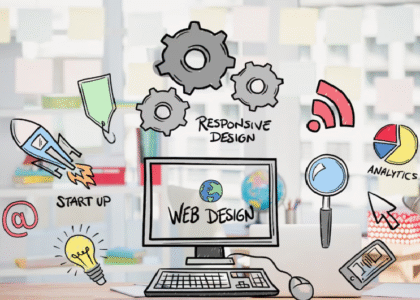Libraries have transformed today with innovative software solutions that simplify management and maximize member experiences. Learn how the advanced library management system makes it easy to streamline operations, enhance engagement, and future-proof libraries for the digital age.

ADVERTISEMENT
The modern library is far from being a mere book depository; it is now more of a dynamic knowledge center with community interaction. The libraries need to incorporate modern software solutions that facilitate and simplify operations while providing the best experience to members in order to match the changing needs of users. Here, we explore how using the services of a library management software development company can be used to unlock new opportunities for efficiency, accessibility, and engagement.
ADVERTISEMENT
-
Introduction to the role of library management software
The modern library management software (LMS) forms a central nervous system which puts in tandem numerous different functions like cataloging, circulation, user management, and reporting.
Some key characteristics of LMS:
- Cataloging & Classification: it permits the accurate and precise order of resources so that it will help members to easily locate resources.
- Automated Circulation: check in/check out procedures become automated hence saves staff time and reduces chances of errors.
- Member Management: It keeps track of user profiles, borrowing history, and preferences.
- Analytics & Reporting: Provides valuable insights into library usage patterns and member behavior.
- Why Libraries Need It: A library without a solid LMS is not efficient and can’t fulfill the expectations of the modern tech-savvy user. Transitioning from manual systems to automated solutions has become a need in today’s fast world.
ADVERTISEMENT
-
Innovation for Member Experience
Libraries are community pillars; therefore, a member-centric approach is the only way an LMS can be sustainable. Such a well-designed LMS delivers several benefits to the user experience:
User Centric Features:
- Self-Service Portals: With such portals, members can reserve and renew books or access the e-resources.
- Digital Accessibility: The mobile-friendly interface combined with apps provides access to library resources 24×7.
- Personalized Book Recommendations: AI-driven systems provide recommendation of books and resources based on user preferences.
- Increased Involvement: Libraries that have incorporated interactive tools, such as virtual tours, online forums, and gamified learning experiences, create stronger member loyalty and participation.
- Streamlined Processes: The automation of mundane tasks such as overdue notifications and inventory checks allows staff to focus on member engagement and service improvement.
ADVERTISEMENT
-
Custom Solutions for Unique Library Needs
Each library has specific issues, whether it’s a public library with different needs or a specialized research library with niche requirements. Working with a library management software development company ensures tailored solutions.
Customizable Modules:
- E-Resource Integration: The library can easily manage the subscription of journals, eBooks, and databases.
- Advanced Search Capability: The system can make a precise search possible using filters, Boolean operators, and keyword mapping.
- Multilingual Support: Ensures inclusivity for diverse member demographics.
- Case Study: An archaic regional library system that had some outdated software partnered with a development company to create a cloud-based LMS. Success story? Member satisfaction went up 40% and resource utilization was 25% higher within one year.
ADVERTISEMENT
-
Future Technologies
The management of a library in the future would involve the adoption of new and contemporary emerging advanced technologies that transform operations of libraries and services to the society.
Artificial Intelligence & Machine Learning:
It will also be able to forecast client behavior, sort the items on own and offer relevant suggestions.
IoT
IoT-integrated smart shelves shall automate the scanning and tracking process of the inventory with which they update the database in real time.
Blockchain for Data Security
Blockchain technology will enable libraries to maintain the security of their members’ data and make all transactions transparent.
Cloud Computing
The use of cloud computing helps in scaling operations, data backup, and access for both staff and members through remote connections.
Imagine using VR to explore historical archives or AR to guide members to specific shelves. These immersive technologies can make libraries more interactive and appealing.
ADVERTISEMENT
-
Seamless Integration with Third-Party Tools
Modern library ecosystems often require collaboration with multiple platforms and tools to provide a unified user experience. Integrating third-party solutions into a library management system enhances its functionality and creates a seamless operational flow.
Examples of Essential Integrations:
- E-Learning Platforms: Collaboration with sites such as Moodle or Coursera would enable the library to distribute learning content directly from the LMS.
- Payment Gateways: Process Overdue Book Fees, Membership Payments, and Registration for events securely and easily through payment gateways.
- Communication Tools: Automated email and SMS services would alert people about reservations, due dates for books, and upcoming events in advance.
- Benefits of Integration: Work Flows would become streamlined: Staff can conduct all activities under one single dashboard and avoid repetition.
- Improved User Accessibility: Members benefit from a streamlined experience of accessing resources from all possible platforms.
- Increased Data Synchronization: There is timely updating to ensure that all the systems would be in alignment and with accuracy.
Libraries in partnership with a library management software company can request special integrations tailored to their specific ecosystem, creating a pathway for further efficiency and user satisfaction.
ADVERTISEMENT
-
Sustainability and Cost-Effectiveness with Library Software
Adopting library management software is not just an exercise in technological progress, but it also saves resources and helps in sustaining activities in the long run.
Eco-Friendly Operations
- Paperless Systems: Automatic procedures for cataloging, reminders, and member enrollments save much paper
- Energy Efficiency: Cloud-based operations save much hardware, thus consuming lesser energy, and keeping carbon emissions down
Financial Benefits
- Reduced Administrative Costs: With automated processes, much manual effort will be freed up for other tasks.
- Optimized Resource Utilization: Analytics will reveal which resources are most utilized so that budget allocations are data-driven.
- Scalability: Libraries can scale up their software capabilities as their needs grow without having to incur costly overhauls.
- Case for ROI: Libraries that have implemented full featured LMS solutions show excellent returns on investment, decreasing cost and increasing member interaction. With a development company partnership, the solution will be aligned both within budgetary constraints and within the strategic goals.
ADVERTISEMENT
-
The Role of Trusted Development Partner
The selection of the right company for the development of your library management software is critical for the success of your digital transformation. A good partner can provide the expertise, customization, and ongoing support that align with the goals and challenges of the library.
Qualities to Look for in a Development Company:
- Experience and Expertise: Look for companies that have experience in developing library software.
- Custom Development Capabilities: Make sure they can tailor solutions to meet your library’s unique needs.
- Ongoing Support and Maintenance: It is obvious that clients should have access to accurate post-deployment assistance to maintain unity and shallowness.
- Scalability: The company should design systems that can grow with your library.
- Data Security Practices: Partner with a company that prioritizes member data protection and complies with relevant privacy laws.
- Building a Collaborative Relationship: The right partner will collaborate closely with library staff to understand their pain points, goals, and workflows. That is the way to make sure that the system developed is functional and easy to use.
- Success Story: A leading library in Punjab collaborated with a renowned software development company to shift from the legacy system to an extremely advanced LMS. The advantages were: member engagement was increased by 50%, and the operational cost decreased by 30%, and hence the value of the right partnership.
ADVERTISEMENT
Conclusion
The evolving library will require innovative software solutions. A forward-thinking library management software development company would offer the tools and expertise needed to transform the traditional library into a modern center for learning and community. Optimizing member experiences and ensuring relevance in an increasingly digital world can be achieved with advanced technologies and user-centric design.
Acquiring the best library management systems is no longer an option, but a necessity. To some extent, the slowly developing libraries started to feel the need for innovation within them and question how the knowledge is delivered and stored.
ADVERTISEMENT






